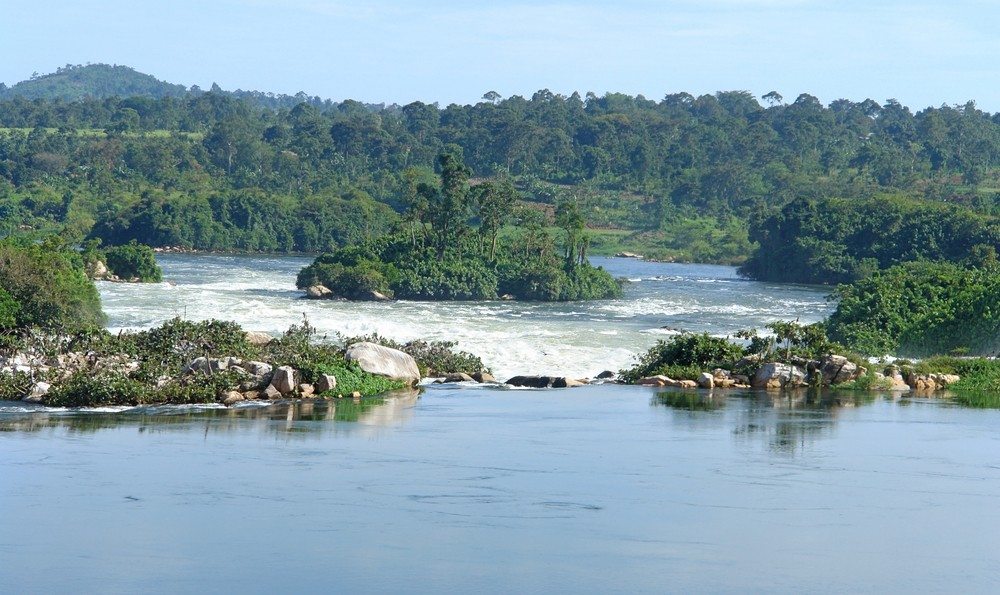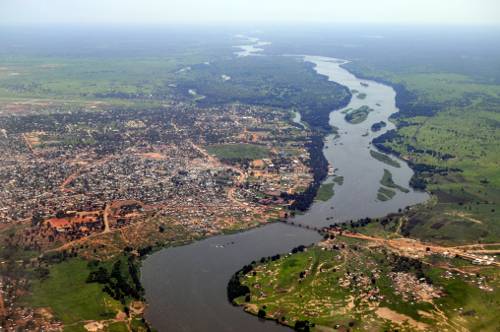The River Nile or Nile River is arguably one of the most famous rivers in not only Africa but the world at large. This colossal river is also believed to be the longest river in Africa and the second longest in the world after the Amazon. The river that has come to be known as the father of African rivers rises south of the Equator and flows northward through northeastern Africa to drain into the Mediterranean Sea.
The following are more mesmerizing facts about the Nile River including its source, length, relationship with Ancient Egypt, as well as the agriculture it supports and more. We hope you’ll find it interesting.
See Also: 10 Greatest Landmarks on Map of Kenya
Source Of The Nile River
Every river always has a source. This may be a mountain spring or an underground source. But this unusual river has some fascinating history especially when its source is the subject of discussion. The reason is that for hundreds of years of its existence, the original source of the vast Nile is yet to be established.
Often times, it is said to be from Lake Victoria. But what’s always conflicting is the fact that the lake features big enough feeder rivers and the Kagera River which drains into Lake Victoria close to Tanzania Town of Bukoba is said to be the longest of its feeders. However, given that the longest tributary of the Kagera is still unknown which means it is uncertain if it is the longest source of the Nile, many sources believe it should be Ruvyironza in Burundi or the Nyabarongo from Rwanda Nyungwe Forest since they both meet close to the Rusumo falls on the two countries’ border.
Well, several other expeditions such as “The White Nile Expedition, 2014” attempted to find its source. Nonetheless, due to its expansiveness and several other reasons, lots of controversies still exist. While the actual source remains a mystery, the most likely starting point is believed to be in the Central region in Africa in either Burundi or Rwanda.
Where Does it Start, its Valley & Map Location
River Nile has proven to be a channel and link to different countries in the continent. Made famous by its impressively large size, the river is believed to start from South of the Equator to northward through northeastern Africa. It drains into the Mediterranean sea, draining in an area estimated at 1,293,000 square miles.
It is also surrounded by the Mediterranean on the north while the Red Sea Hills and the Ethiopia Plateau sit on its east. On the south, you will find East Africa Highlands which comprises Lake Victoria, a nile source and less noticeable watershed between the Nile, Congo and Chad basins. The river also stretches into northwest to include the Libyan desert, the Al-Jilf al-kabir plateau of Eygpt and Marrah Mountains of Sudan.
The overall outlets it flows into include Tanzania, Rwanda, Kenya, Uganda, Sudan, Ethiopia, Democratic Republic of Congo, cultivated part of Egypt and Burundi. However, its farthest basin is alleged to be either in Burundi or Rwanda.
River Nile is formed by three key streams. They include the white Nile which flows into Lakes Victoria and Albert, the Blue Nile from Ethiopia Lake Tana in the highlands and the Atbara from north of Lake Tana.
River Nile’s Exact Length
Despite the fact that the Nile River has been in existence since time immemorial and is believed to have played a major role in early civilisation, the exact length is also not known to date. The approximations vary from a whopping 6,650 to 6,853 kilometres long. This can be blamed on the fact that its origin still remains a mystery. But note that the River Nile is so huge such that despite going through several countries, it still manages to support half the population in Egypt which stood at about 82 million after the country’s last Census. The Nile is used to irrigate cotton fields and horticultural farms. It is also a spot for fishing as well as a transportation route.
See Also: 11 Best Beaches in Kenya
Mesmerising River Nile Facts
The Nile is arguably the most famous name for the river. However, owing to its many tributaries and distributaries, the name will change from one region to another. In Sudan, you may hear it being referred to as Bahr al Ghazal. Downwards it will be known as Bahr el Abyad. In Ethiopia, it starts as Bahr el Jabal before becoming Sobat.
And if you’ve been to Egypt, you may have a hard time finding the Nile River in some regions. Not because it doesn’t exist, but simply because it bears another name there. It is referred to as “Aur or Ar” which means Black in Egyptian. The name comes about from the black sediment left behind by the river. Other names include Aur, Atbara, The White Nile, Yellow Nile, and the Blue Nile.
The river may only be a natural water source; however, no river in history has caused so many political wrangles. It is believed that Egypt who fully depend on the river always stir up political instability in Ethiopia as a way of stopping them (Ethiopia) from initiating projects such as irrigation or hydroelectricity dams in it.
Also, early civilization is said to have started in the river. This is based on the historical artifacts which have been discovered inside and also near the river. Currently, major towns in Egypt are located along its bank. The most important being Cairo, the Capital City. The Nile Bridge is the most famous attraction on the river.
The Nile is governed by a pre-colonial Agreement. This is because the people at the lower side of the river feared that the people at the source would deprive them of water. To come up with a sort of equitable distribution, the Nile treaty was formed. It governs how the water is to be distributed among the countries along the river.
This isn’t surprising since River Nile’s economic importance was noted since the beginning; it plays a very important role in the economies of many countries along its banks. It provides drinking water, fishing grounds and also a mode of transport. It is used for the production of hydroelectricity; for instance Sennar Dam in Sudan and Aswan High Dam in Egypt.
The Nile also takes the crown for winding through many countries. This is basically why it is known as the “international River”. It goes through eleven countries. These are Rwanda, Uganda, Burundi, Tanzania, Kenya, Democratic Republic of Congo (DRC), Eritrea, Sudan, Ethiopia, South Sudan, and Egypt.
Naturally endowed, the Nile River has more world-famous crocodiles than any other river in the world. The Nile crocodile is a type of crocodile only found in the river. The animal normally attains a length of 4 meters on maturity although longer species have also been recorded.
Well, it is certain that the above rare facts about River Nile have certainly shined new light on the phenomenal river.



